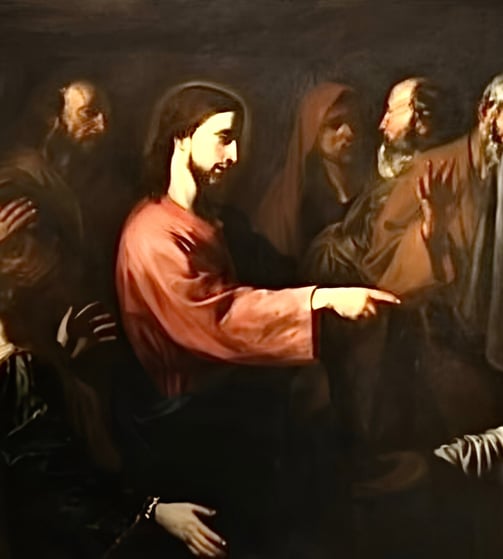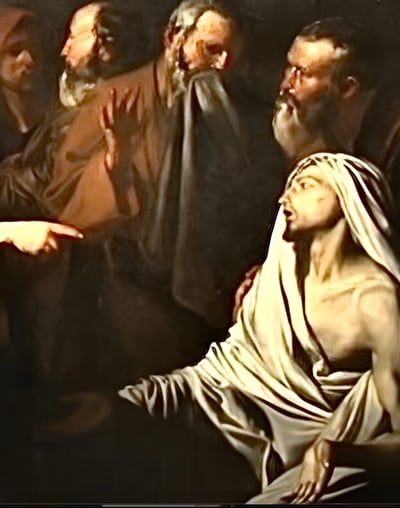The Resurrection of Lazarus – Jusepe de Ribera (c. 1616)
This painting belongs to Ribera’s rare Roman period, which preceded his long residence in Naples. It is considered one of his most powerful works for its dramatic force and narrative intensity. The Resurrection of Lazarus captures the moment Christ restores life to his lifeless friend, surrounded by astonished and emotional onlookers.
Ribera tackles the subject with raw, vigorous naturalism, depicting flesh, dust, physical gestures, and emotional expressions with visceral precision. The light, entering from the left, models the bodies like sacred sculptures on stage, endowing the scene with a moving and almost violent sacredness. Lazarus, still wrapped in his burial cloth, is painted with striking physical realism, almost sculptural in form.
This painting stands as one of the highest expressions of Baroque spirituality, where faith and flesh converge in a visual miracle dense with pathos and theological meaning. Acquired by the Prado Museum, it is now regarded as a cornerstone of Ribera’s early artistic maturity.
CONTACT →






